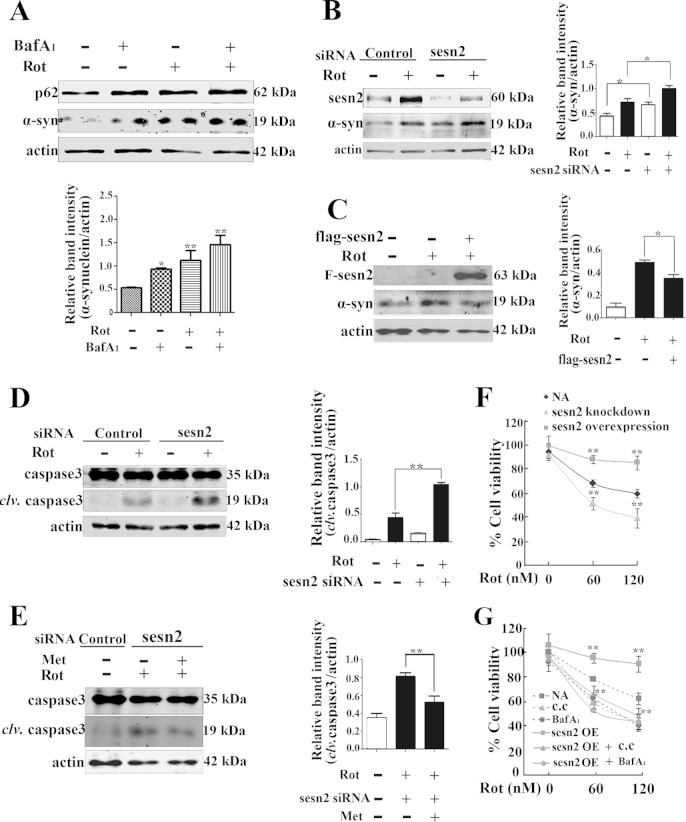FIG 7.
Sestrin2 upregulation enhanced α-synuclein degradation and inhibited caspase 3 activation. (A) Mes 23.5 cells were treated with 20 nM rotenone for 10 h and then with 100 nM bafilomycin A1 for an additional 2 h. Cells were harvested and immunoblotted for p62 and α-synuclein. (B) After sestrin2 knockdown, cells were incubated with rotenone for an additional 12 h and then were harvested and immunoblotted for sestrin2 and α-synuclein. (C) After sestrin2 overexpression, cells were incubated with rotenone for an additional 12 h. Cells were harvested and immunoblotted for Flag and α-synuclein. (D) After sestrin2 knockdown, cells were treated with 20 nM rotenone for an additional 24 h and immunoblotted for caspase 3. clv, cleaved. (E) After sestrin2 knockdown, cells were treated with rotenone for 20 h and then with metformin (2 mM) for an additional 4 h. Cells were harvested and immunoblotted for caspase 3. (F) After sestrin2 knockdown or sestrin2 overexpression, cells were treated with rotenone for an additional 12 h. Cell viability was assessed with an MTT assay. (G) Cells were treated with rotenone alone or rotenone combined with compound C (20 μM) for 12 h or rotenone for 10 h and bafilomycin A1 (100 nM) for an additional 2 h. Cell viability was assessed with MTT assay. After sestrin2 overexpression (OE), cells were subjected to the same treatment, and cell viability was assessed with MTT assay. Values are the means ± SEM from three independent experiments. *, P < 0.05; **, P < 0.01.

